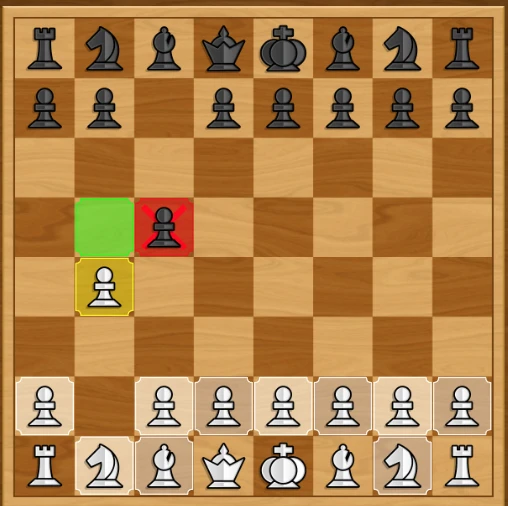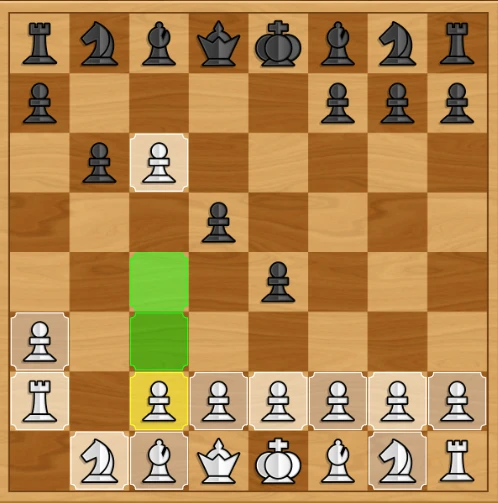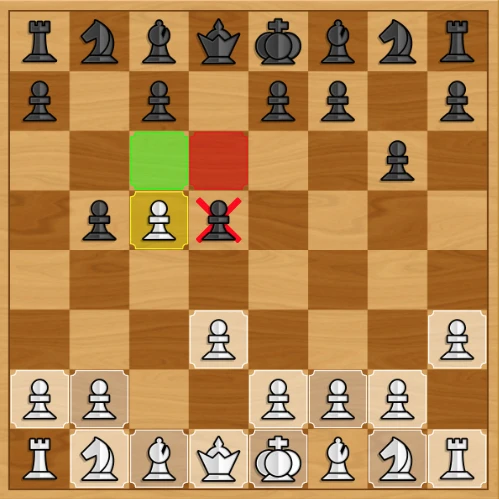How Do Pawns Move in Chess? Essential Guide for Beginners

The humble pawn is seen by many as the weakest of all the chess pieces. It has limited movement options and tends to be the piece you’re willing to sacrifice in the name of winning the game. How do pawns move in chess? It’s relatively simple - especially when compared with other chess pieces - though there are a few special moves here and there to be aware of.
Don’t worry - if you’re a complete chess newbie, this guide is for you. We’ll explain all the different pawn movements and how to make the most out of your pawns to win more games of chess.
Understanding Basic Pawn Movement
Different chess pieces represent different things or people from medieval times. Did you know that pawns historically represent soldiers or infantry? Specifically, they’re designed to symbolize armed peasants or pikemen who’d sit at the front of an army and be used as sacrificial lambs to protect the more valuable army members.
That’s why there are more pawns than any other piece on the chessboard (eight in total), and they sit in front of all the other pieces. As a result, the pawn will be the first piece moved during a game - but how can you move it?
Basic pawn movement is as follows:
- You may move your pawn forward one square at a time
- On the pawn’s first move, you can move it forward two squares - provided there’s enough space for this
See, it’s genuinely the most straightforward movement in the game. You can’t move a pawn side to side or backward; it can only move forward on the board.
How Pawns Capture Other Pieces
There’s a slight difference in pawn movement when it’s time to capture pieces. As you should know, the aim of Chess is to checkmate your opponent. To do this, you’ll need to remove pieces from the board, which will weaken your opponent’s defenses.
Different pieces can “capture” in various ways - with a pawn, you can only capture another piece by moving diagonally forward one place to the left or right.
It’s also important to note that - unlike checkers - when you capture a piece, you move your piece onto the captured piece’s square rather than into the space behind it. Therefore, you can only make a successful capture with your pawn if there’s an enemy pawn in the space diagonally one place ahead to the left or right.
The image below shows what this looks like in a game:

In this specific scenario, the white pawn can move diagonally to the right to capture the black pawn and take its place. Bear in mind that you can only move one space to capture a piece using your pawn - even if it’s your pawn’s first move, as demonstrated below:


These images show a couple of scenarios that clear up what happens when you want to capture a piece with your pawn’s first move. On the left, you’ll see the pawn can only move forwards two spaces. It can’t move two spaces diagonally to capture the pawn to the right.
In the second image, the pawn can (again) move ahead two spaces if it wishes, or it can move diagonally one space to capture the first pawn. However, it can’t jump over the first pawn to capture the second pawn, nor can it capture two pawns in one go.
That should clear everything up: pawns can only capture one piece at a time by moving forward one place diagonally to the right or left.
Special Pawn Moves Explained
Having said all of the above, there is one other way for you to capture a piece using a pawn. It’s through a special move called En Passant, which loosely translates from French to mean “in passing.”
It’s a unique move that only pawns can make to capture an adjacent piece without landing on the same square as that piece. You still make a diagonal move, only you land on the square behind the captured piece and still remove it from the board. The situation will look like this:

Notice how the highlighted white pawn can move diagonally into the highlighted red square. There’s an X on the adjacent black pawn because moving to the red square will capture it. This is En Passant in action - and it’s a fairly advanced move a lot of chess novices don’t know.
Why can’t you move the white pawn behind the black pawn on the left to capture it? A good question, and it’s because pulling off an En Passant requires some strict rules:
- The pawn capturing the piece must have moved exactly three squares
- The pawn being captured must have moved exactly two squares in one move, positioning it next to the capturing pawn
- You must capture the adjacent pawn on the next turn - if you don’t, then you can no longer take the piece “En Passant”
In the previous image, the black pawn to the left of the capturing pawn didn’t move exactly two squares in one move. It moved one and then another one, meaning the En Passant rules don’t apply.
Pawn Promotion: A Game Changer
The final thing to know about how pawns move in chess is that you can “promote” a pawn by getting it to the other end of the board. You get to promote the pawn to any of the following chess pieces:
- Queen
- Rook
- Bishop
- Knight
To be honest, most players promote their pawns to Queens as it’s easily the most powerful piece. The pawn now acts like a Queen and inherits this piece’s movement, meaning it can move any number of spaces in any direction. A Queen also captures in the same way, which completely changes the face of the board. The more Queens you can make, the better chance there is of checkmating your opponent.
Practice Pawn Movement At 247Chess
We hope this guide explains all the intricacies of pawns and their movements. Put this knowledge into action by firing up some games at 247Chess today. Play against a computer, take on online opponents, or enjoy pass & play with a friend.
Seasonal Chess Games
More Games
Chess News
Disclaimer
DISCLAIMER: The games on this website are using PLAY (fake) money. No payouts will be awarded, there are no "winnings", as all games represented by 247 Games LLC are free to play. Play strictly for fun.

































